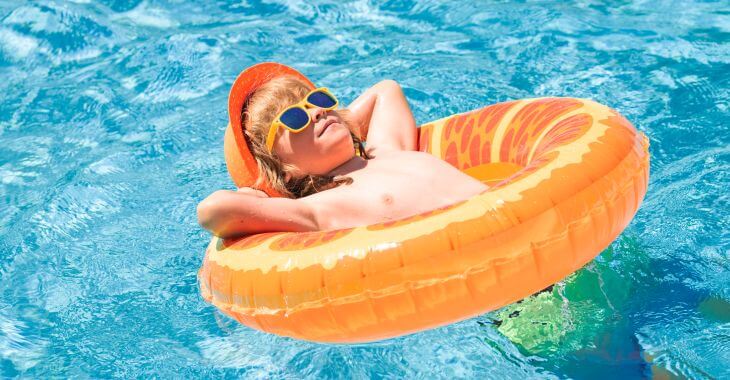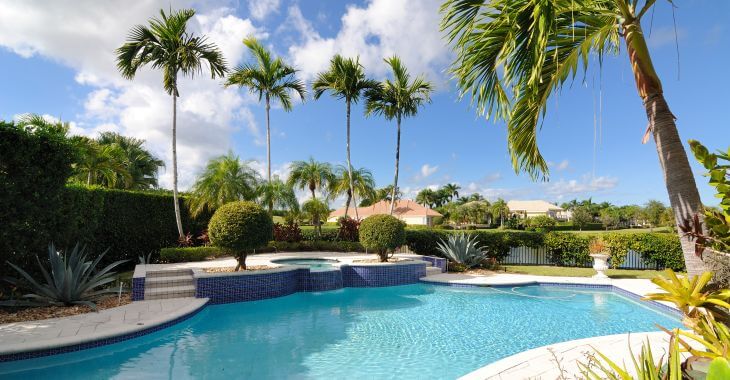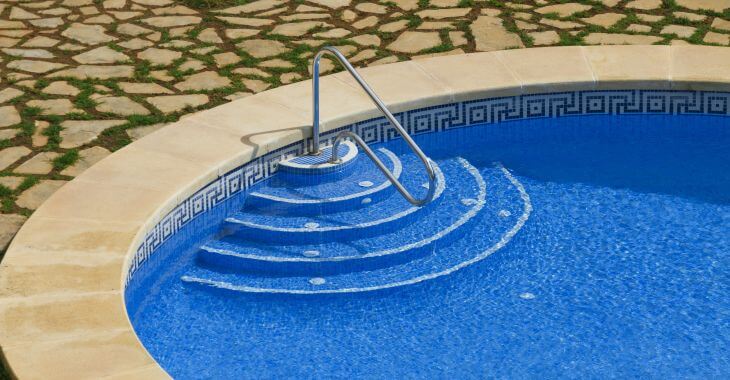How Much Liquid Chlorine to Add to the Pool

One of the key aspects of maintaining a swimming pool is ensuring the water is kept at the right pH levels. Liquid chlorine is one of the chemicals many pool owners need to ensure their pool water is safe for swimming. However, you must know how much liquid chlorine to add to your pool to keep it safe.
Why Is Chlorine Used in Swimming Pools?
The clear, blue water in swimming pools does not happen by accident. If you fill a large basin with water and let it sit outside, it will quickly become murky with algae and other organisms that love stagnant water. To keep a swimming pool sparkling, inviting and safe, you need to keep these organisms at bay.
Chlorine is an excellent chemical for killing algae. When used in small amounts, chlorine is safe for humans but deadly to algae. Algae are what create murky water and slime on the bottom and sides of the pool. While unpleasant, algae are not dangerous, but what feeds on them can make you very ill.
Bacteria that feed on pool algae is what chlorine helps to prevent. When there is no food for the bacteria, they cannot live in the pool. Plus, there are active elements in liquid chlorine that can kill these harmful bacteria and keep the pool water safe for humans.
Types of Chlorine for Pools
There are different types of chlorine that can be used to sanitize swimming pools and keep the pH level correct to avoid algae and bacteria infestations. There are granular, tablet and liquid forms of chlorine that can be used to maintain pool water. Liquid chlorine has the benefit of sanitizing the fastest.
All forms of chlorine used in swimming pools need to be carefully monitored. Chlorine in its pure state is toxic to more than just algae and bacteria – it is also toxic to humans. If too much chlorine is added to the pool, swimmers can experience health side effects which include:
- Burning skin, eyes, ears and throat
- Difficulty breathing
- Asthma attacks (asthmatic individuals)
- Fluid in the lungs
- Watery eyes or blurred vision
There is a definite balance that needs to be achieved when determining how much liquid chlorine to add to pool water. You want enough to kill the harmful organisms but not too much, as it could harm the humans and animals swimming in the pool.
How Much Liquid Chlorine to Add to a Pool Per Gallon
The goal with liquid chlorine and pool water is to keep the level between one and five parts per million, or PPM. Most pool professionals will strive for 2-4 PPM, as it keeps the water sanitized without causing irritating side effects for swimmers. To achieve this, you need to know a few things about your pool:
- Your current chlorine levels
- Number of gallons in your pool
- How to safely add the liquid chlorine to your pool
There are many convenient chlorine tests that can be used to determine the current chlorine levels. You should be testing your pool frequently – if it is used every day, it is a good idea to test it daily. Follow the instructions exactly on the test to ensure you get an accurate chlorine PPM level.
Once you have an accurate chlorine level, you need to determine how many gallons of water are in your pool. Swimming pools vary greatly in size, shape and volume. If you do not know the volume of your pool, you will need to calculate this by multiplying the length, width and average depth, then:
- Multiple by 5.9 for a round pool
- Multiple by 6.7 for oval pool
- Multiple by 7.5 for rectangle pool
Most pools range from 10,000 to 30,000 gallons. To raise chlorine levels by 1 PPM, you need to add .00013 ounces of liquid chlorine per gallon in the pool. Multiplying the number of gallons times .000113 will give you the number of ounces to raise your chlorine 1 PPM. To raise it more than one, multiply that number.
How to Add Liquid Chlorine to Your Pool
When adding liquid chlorine to your pool, you can either add it directly to the water or use a pool chlorinator that mechanically adds the chemical. Remember to wear the recommended protective gear, such as gloves and goggles, when handling liquid chlorine.

Chlorine should not be added to outdoor pools in sunlight – early morning or after dusk is the best time to add liquid chlorine to outdoor pools.
The right amount of chlorine, along with other chemicals, can keep your swimming pool safe and clean. Monitoring your pool chlorine levels is vital, along with knowing how much liquid chlorine to add to a pool per gallon when the levels are low. Make sure to keep a vigilant eye on your pool’s chlorine for the best results.
